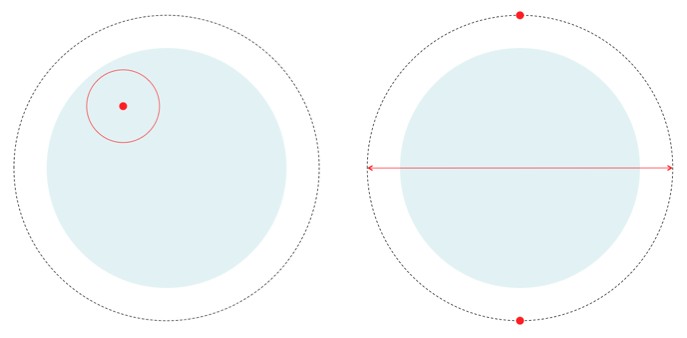--https://en.wikipedia.org/wiki/Real_projective_lineIn geometry, a real projective line is an extension of the usual concept of line that has been historically introduced to solve a problem set by visual perspective: two parallel lines do not intersect but seem to intersect "at infinity".
For solving this problem, points at infinity have been introduced, in such a way that in a real projective plane, two distinct projective lines meet in exactly one point. The set of these points at infinity, the "horizon" of the visual perspective in the plane, is a real projective line.
It is the circle of directions emanating from an observer situated at any point, with opposite points identified. A model of the real projective line is the projectively extended real line. Drawing a line to represent the horizon in visual perspective, an additional point at infinity is added to represent the collection of lines parallel to the horizon.
Ok, you say, this is from Wikipedia. Yes, but this is one of > 100,000 hits I get when I google "circle of directions".
So yeah, ok then. The infinite line (the dashed line in the diagram), is a set of parallel lines. I knew that. In fact it makes sense--a line at infinity must have lines parallel to it, also at infinity. This follows because a circle with finite radius with a single point on the infinite boundary, has its centre on the boundary (because the finite radius doesn't exist at infinity).
So now, how does the diagram of the projective plane (which is still the Euclidean plane), map to a sphere? How is the sphere topologically the plane?
Last edited:


